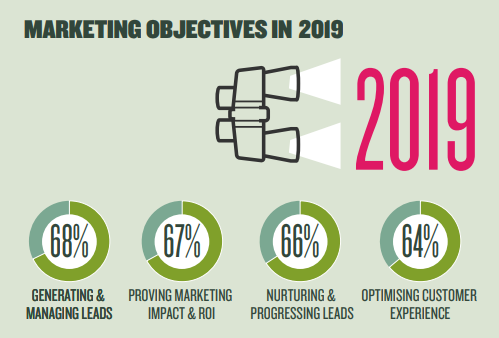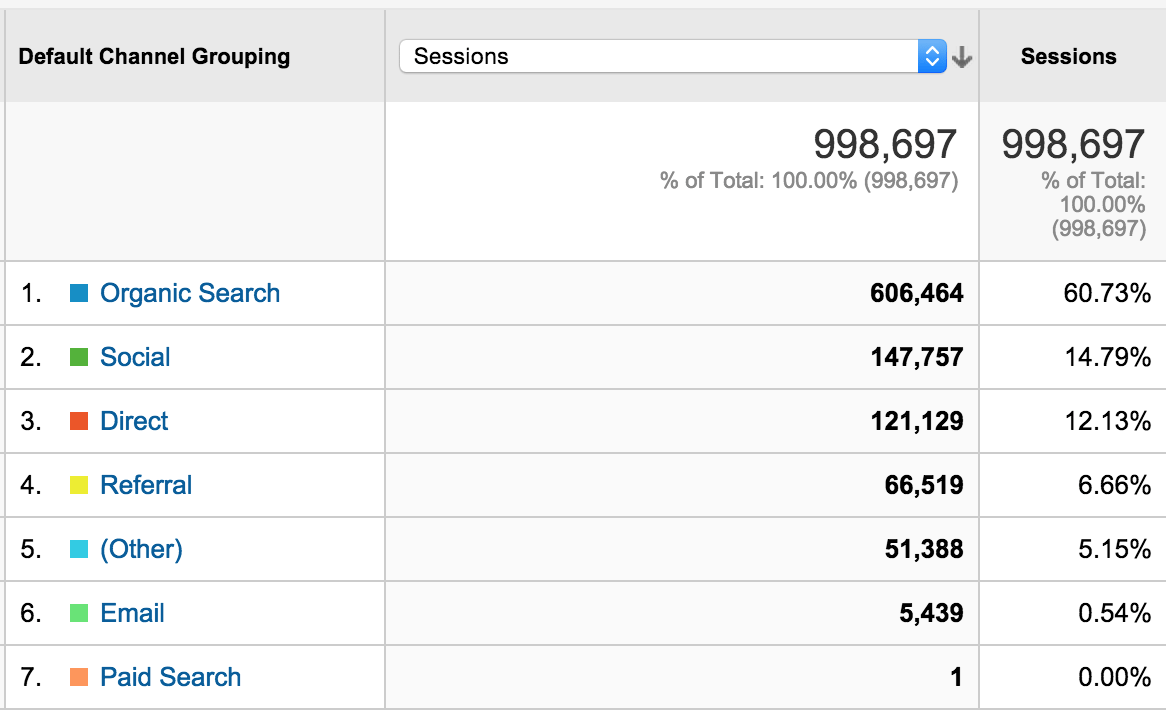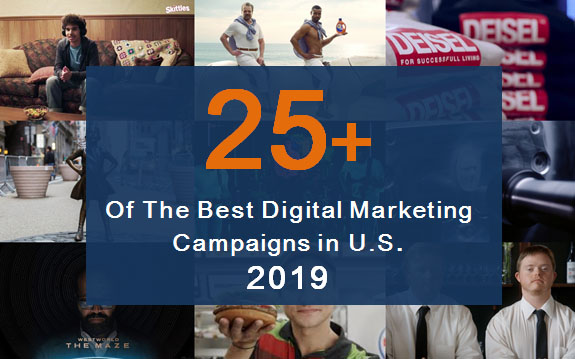Track Like a Hawk – Part 1: The Common Digital Marketing Objectives for any Campaign
Digital Marketing | Feb 25, 2019
We believe that any effective digital marketing campaign starts with setting the right digital marketing plan which starts in turn with digital marketing objectives.
The objectives you decide on for your digital marketing campaign should te SMART (Specific, Measurable, Attainable, Relevant and Timely). When defining your digital marketing objectives, you need to think first about how they will align effectively with your overall business’ goals and your key performance indicators (KPI’s).
The next and important step to consider after defining your objectives is to start projecting some nominal KPI targets, how you will measure the success of your plan, and which measurements you will use to monitor your success.
That’s why we providing this “Track Like a Hawk” Series contains three main parts summarize:
- The common goals and objectives for any digital marketing or social media marketing campaign,
- The most used metrics you need to use to ensure that your digital marketing efforts create a real impact on your bottom line.
- The best tools for measuring the success of your digital marketing plan and each of your KPIs.
Let’s start with part one to stop panicking about next month or next year and start crafting a stunning plan that can pack a powerful punch. This part identifies the most common marketing objectives of any digital marketing plan or social media marketing campaign and what metrics should be used for each goal.
The Common Goals & Objectives for any Digital Marketing or Social Media Marketing Plan:
1. Lead Generation
Lead generation is the process where a possible customer is asked to fill in contact details to get more information about a product or a service so that companies can get direct access to their potential customers to start persuading them to buy what they are offering. We can say that lead generation is half of the battle. It’s just the bridge between marketing and sales. The big efforts rely on sales and direct marketing to persuade customers with the make an actual purchase.
Lead generation is typically used by businesses with a long sales process, such as insurance, banking & finance, mortgage & real estate, education, IT software, and security services. Furthermore, lead generation is more likely to be used by B2B companies as it ranked the top of digital marketing objectives for 68% of B2B marketers in Australia. Globally, generating sales leads is also the top 2018 marketing objective for B2B marketers.

Digital Marketing Objectives in Australia – 2019 Data
How to Measure the Success of a Lead Generation Campaign:
Whether your leads are coming from organic traffic, paid traffic, content marketing, or referrals it’s essential to track them at the source to help shape your coming campaigns. Here are the top metrics you can use to track your lead generation campaign:
- Click Through Rates (CTR) – It’ll tell you is how relevant your lead generation campaign into a particular lead segment or category.
- Conversion Rates – It shows how many of those who clicked on your links and campaign channels actually perform a prescribed set of actions that will turn them into leads.
- Cost per Lead (CPL) – It refers to the cost you spent per each lead before they become a paid customer or client.
- Lead Qualification – It gives your insights on which particular leads you will prioritize in nurturing.
2. Branding / Increase Brand Awareness
How will you inform the online audiences about your brand? How will you build up your brand image so the audiences see you the way you want them to see and conceive? that is the concept of the brand awareness objective. Simply, brand awareness is the degree of a brand’s consciousness in the minds of its target audience.
In niches crowded with competitors, it’s important for many businesses to plan and launch brand awareness campaigns that promote their business and help them to retain and grow their market share. Furthermore, brand awareness campaigns also support increases in lead conversions as it can affect positively on increasing lead conversions.
It worth to be mentioned that 86% of companies that need to increase brand awareness, achieve it using online influencer marketing. Also, increasing brand awareness is considered the primary objective for marketers on Instagram.

A Pie Chart Shows the Primary Goals for Marketers on Instagram in 2018
How to Measure the Success of a Brand Awareness Campaign:
Here are the Top Metrics and Tools for Tracking Brand Awareness campaigns:
- Website Traffic
- Organic Search Impressions
- Paid Search Impressions
- Advertising Banner Ad Sessions
- Increase in Social Followers, Social Impressions, Social Engagement
- Online Reviews
3. Driving Traffic
Driving visitors to your website or blog is a step further from having a good brand awareness. According to Buffer, 60% of marketers use social media marketing to distribute their content and drive traffic to their sites. We can say that this goal is more likely to be done for budding entrepreneurs who start a new business.
How to Measure the Success of a Traffic-Driven Ad Campaign:
Google Analytics is the core here. Here are some elements you need to track:
- Traffic from sources you depended on – “How many visitors are coming from each source?”
- The share of overall traffic – “How much of your overall traffic does (for example from social media account)?”
- The bounce rate of each source – “What is the quality of the traffic from each source?”

All Traffic Sources Tracked by Google Analytics
4. Boost Brand Engagement
So many marketers busy themselves growing email lists, social media fans, and followers but ignore a primary metric that creates mobs of supporters. It’s called engagement, and it can expand your brand lift by over 300%. But according to Chief Marketer, engagement is considered the top social media challenge in 2019 for 65% of marketers. In contrast, engagement is the most used way to measure social media ROI.
How to Track Engagement:
- Likes & Shares
- Audience Growth/Rate of Followers
- Followers vs. Following Ratio
- Active Fans
- Clicks Per Post
- Audience Mention
5. Grow Sales and/or Revenue
It’s the top-level digital marketing objective for many businesses. Needless to say that every business or brand work and keep working to increase revenue and the amount of money coming into their businesses.
Focusing on Social media, it’s becoming an increasingly popular strategy to boost sales with over 53% of Canadian shoppers use social media when making shopping decisions. Social media is great to turn your audience into paying customers directly in case you don’t have a long sales process.

% of Canadian Shoppers Who Use Social Media When Making Shopping Decisions (2017 Vs. 2018)
How to Measure Sales/Revenue Growth:
There are two main terms to consider when measuring revenue growth. They’re 1. current sales revenue (the total dollar value of sales during the current time period) and 2. previous period sales revenue (the total dollar value of sales during the previous time period).
In terms of metrics to track revenue growth:
- Revenue from ads – “How much revenue is your digital advertising achieved?”
- Signups / Revenue – “How many sign-ups” Or “How much sales/revenue is your digital marketing channels achieving?”
You can track your revenue using Google Analytics. If you are using Facebook ads, you can use Facebook Pixel. If you are an e-commerce website, Ecommerce Tracking in Google Analytics might be more suitable.
Now it’s time to elaborate on the success measures of digital marketing campaigns, the importance of each measurement and formula of calculation. Check Track Like a Hawk – Part 2 NOW!
See you There 😉





